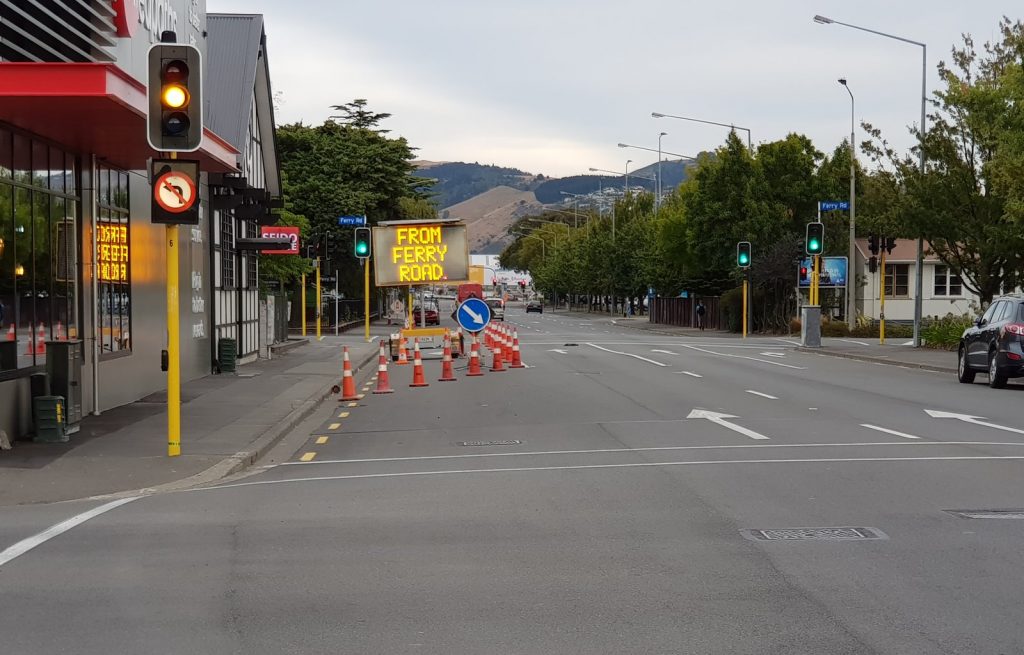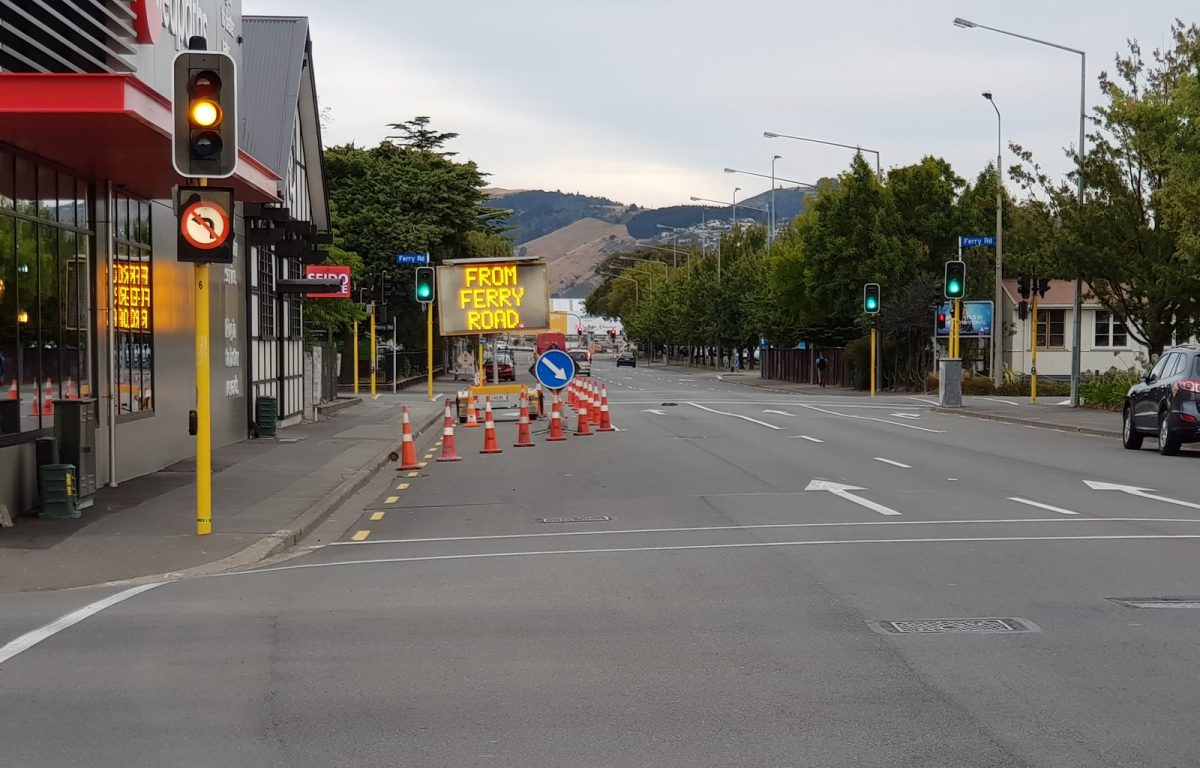Perhaps this should be called “pet peeve of the day”: At the moment, work is underway for the city-end section of the Heathcote Express cycleway along Ferry Rd. This is necessitating some traffic lane closures, including turning lanes into Ferry Rd. Now I get the need for that, but I do wonder about the implementation – here’s a typical example:

The problem is of course for someone cycling along here; whereas normally I might ride in the shoulder space just to the left of the through lanes, that option is removed by completely blocking the lefthand lane. What would it have taken to simply move the cones a metre or so to the left, thus creating a temporary shoulder?
Barbadoes St is now reopened again, but the same problem now applies to the leftmost lane along Fitzgerald Ave. It’s tricky enough to ride on busy roads like this, without completely taking away what little shoulder space used to exist. Simply shifting over the cones a little bit would still stop motorists from using the space for driving, while allowing a safer haven for cycling.
Have you encountered roadworks that leave no shoulder space for cycling?


All roadworks do this don’t they? Also the roadworks signs are always put in the cycle lane
The blocking of safe cycling or even cycle access has been an ongoing problem for many years. Somehow creating similar hazardous conditions for cars is rarely an issue.
This illustrates that such problems can be successfully addressed when there is a will to do so and follow through to make sure workers know how to do things correctly.
It tells us a lot about our cultural attitude that we have yet to recognize that the lives of people on bicycles require at least the same level of concern and practice as those in cars.
I wouldn’t necessarily call something that is potentially fatal for people a “pet peeve”, so I think this post is entirely warranted.
Signs plonked in the middle of cycle lanes are definitely a “pet peeve” of mine, the non-car side of road cones however, normally provide a wonderful de-facto cycle lane.